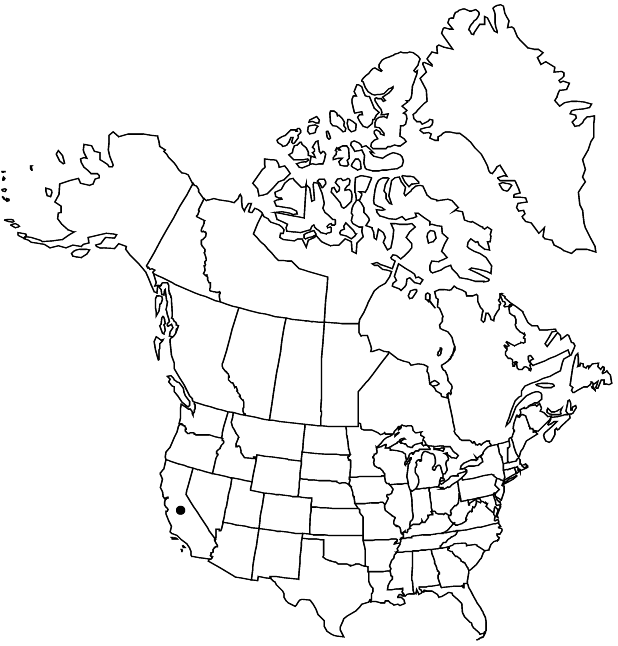Ribes amarum
Erythea 2: 79. 1894 ,.
Plants 1–2 m. Stems erect, villous, stipitate-glandular, glabrescent; spines at nodes 3, 5–10 mm; prickles on internodes absent. Leaves: petiole 2–4 cm, pubescent, stipitate-glandular; blade roundish, 3–5-lobed, cleft 1/4–1/3 to midrib, 2–4 cm, base cordate, surfaces puberulent, stipitate-glandular, lobes oblong to cuneate, sides parallel, margins crenate, apex rounded or deltate. Inflorescences pendent, solitary flowers or 2–3-flowered racemes, 4–8 cm (nearly as long as leaves), axis pubescent, stipitate-glandular, flowers evenly spaced. Pedicels not jointed, 6–8 mm, pubescent, stipitate-glandular; bracts broadly ovate, 3–5 mm, pubescent, stipitate-glandular. Flowers: hypanthium reddish, campanulate, 5–7 mm (1/2 as long as sepals), pubescent, stipitate-glandular; sepals not overlapping, reflexed, maroon, lanceolate, 7–8 mm; petals connivent, erect, pinkish white, oblong, inrolled, 2–5 mm; nectary disc not prominent; stamens 2 times as long as petals; filaments linear, 7–8 mm, glabrous; anthers maroon, lanceolate, somewhat sagittate, 3 mm, apex apiculate; ovary densely glandular-bristly; styles connate 3/8 their lengths, 12–20 mm, glabrous. Berries palatable, purple, globose, 15–20 mm, bristles stiff, mostly glandular, some eglandular.
Phenology: Flowering Feb–Apr.
Habitat: Chaparral, montane coniferous forest
Elevation: 0-2100 m
Discussion
Ribes amarum occurs in central and southern California and in the central Sierra Nevada southward. Plants from the Santa Ynez Mountains of Santa Barbara County with hairy fruits have been named var. hoffmannii. This species shares the apiculate, short-indehiscent anthers with other species in this group.
Selected References
None.
